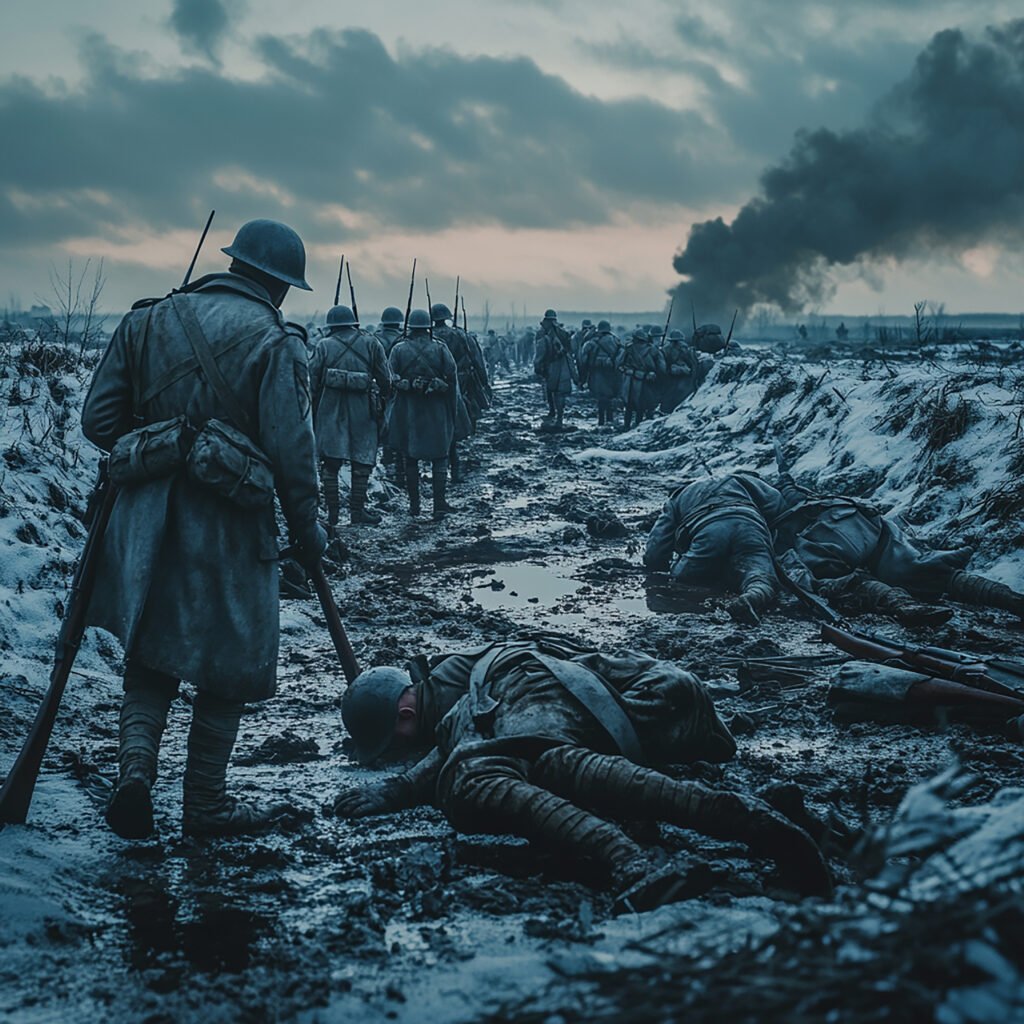
Introduction
World War I, often called “The Great War,” was one of the deadliest conflicts in human history. From 1914 to 1918, it engulfed Europe and reshaped the global political landscape, setting the stage for many of the 20th century’s most significant events. The war was triggered by a complex web of causes, and its consequences were far-reaching, leading directly to World War II. Central to the aftermath of the war was the Treaty of Versailles, which officially ended the conflict but left a legacy of resentment and unrest.
1. The Causes of World War I
World War I was the result of various interconnected political, social, and economic factors. The primary causes can be boiled down to militarism, alliances, imperialism, and nationalism, collectively remembered by the acronym MAIN.
Militarism
In the years leading up to the war, European nations engaged in a massive arms race. Countries like Germany, France, and Britain expanded their military forces and stockpiled weapons, each preparing for the possibility of conflict. This militaristic mindset made diplomacy less effective and war seem more inevitable.
Alliances
The complex system of alliances in Europe was another critical factor. Nations formed defensive pacts, meaning that if one country were attacked, its allies were obligated to join the conflict. Two major alliance systems dominated: the Triple Entente (comprising France, Russia, and Britain) and the Triple Alliance (consisting of Germany, Austria-Hungary, and Italy). These alliances turned a localized conflict into a global war.
Imperialism
European powers were also competing fiercely for colonies and influence around the world, particularly in Africa and Asia. This imperialist competition created tensions between nations, as empires sought to expand their wealth and power. The desire to dominate new territories added fuel to the already volatile situation in Europe.
Nationalism
Nationalism played a significant role in sparking the conflict. Ethnic groups in multi-ethnic empires, such as Austria-Hungary, sought independence, and powerful nations like Germany and France fostered a sense of national superiority. Nationalism not only increased tensions within empires but also made countries more aggressive in defending their national honor.
The Assassination of Archduke Franz Ferdinand
While militarism, alliances, imperialism, and nationalism set the stage for war, the immediate trigger was the assassination of Archduke Franz Ferdinand of Austria-Hungary in Sarajevo on June 28, 1914. The archduke’s assassination by Gavrilo Princip, a Serbian nationalist, led Austria-Hungary to declare war on Serbia. This set off a chain reaction of declarations of war, pulling in alliances and escalating the conflict into a full-scale global war.
2. The Major Events of World War I
The Western Front and Trench Warfare
World War I was defined by trench warfare, particularly on the Western Front. This brutal form of warfare saw soldiers on both sides dug into a network of trenches that stretched from the North Sea to Switzerland. The introduction of new technologies, such as machine guns, poison gas, and tanks, made the conflict especially deadly. Battles like Verdun, Somme, and Ypres saw unimaginable loss of life, with little territorial gain for either side.
The Eastern Front
While the Western Front was characterized by static trench warfare, the Eastern Front between Germany and Russia was more fluid. Germany achieved significant victories, and by 1917, internal turmoil in Russia led to the Bolshevik Revolution, which resulted in Russia withdrawing from the war under the Treaty of Brest-Litovsk.
U.S. Involvement and the End of the War
The United States entered the war in 1917, following a series of provocations, including the sinking of the Lusitania by a German U-boat and the infamous Zimmermann Telegram, in which Germany proposed an alliance with Mexico. The influx of fresh American troops and resources tipped the balance in favor of the Allies. By November 11, 1918, Germany signed an armistice, marking the end of the fighting.
3. The Consequences of World War I
World War I left an indelible mark on the world, with consequences that reverberated for decades.
Human and Economic Costs
The war claimed the lives of approximately 10 million soldiers and another 10 million civilians. Millions more were wounded or displaced. Economically, the war devastated Europe, leaving many nations in debt and facing the enormous task of rebuilding.
Political Upheavals
The war also triggered significant political changes. The Russian Revolution of 1917 led to the rise of communism and the creation of the Soviet Union, a key player in global politics throughout the 20th century. The war also saw the collapse of several major empires, including the Austro-Hungarian, Ottoman, German, and Russian Empires. New nations were created from their remnants, leading to new tensions and conflicts.
The Rise of Fascism
The economic hardships and national humiliation experienced by countries like Germany, due in part to the terms of the Treaty of Versailles, helped lay the groundwork for the rise of fascism in Europe. This was especially true in Germany, where political instability and resentment fueled the rise of Adolf Hitler and the Nazi Party, leading to World War II just two decades later.
4. The Treaty of Versailles
The Treaty of Versailles, signed on June 28, 1919, officially ended World War I. However, rather than fostering lasting peace, it sowed the seeds for future conflict.
The Terms of the Treaty
The treaty placed the bulk of the blame for the war on Germany. As a result, Germany was forced to accept harsh terms:
- War Guilt Clause: Germany had to accept full responsibility for the war.
- Reparations: Germany was required to pay enormous reparations to the Allies, crippling its economy.
- Territorial Losses: Germany lost significant territories, including Alsace-Lorraine to France, and all its overseas colonies.
- Military Restrictions: The treaty severely limited the size of Germany’s military, forbidding it from maintaining a large army, air force, or navy.
The Treaty’s Long-Term Impact
The harsh terms of the Treaty of Versailles fostered deep resentment in Germany. Many Germans viewed the treaty as a national humiliation, coining the term “Diktat” to express their dissatisfaction. The economic hardships caused by the reparations, combined with political instability, helped create the conditions that allowed extremist movements, particularly the Nazi Party, to gain traction in Germany.
Additionally, the treaty’s redrawing of borders in Eastern Europe and the Middle East created numerous ethnic and political conflicts, many of which persist to this day.
Conclusion
World War I was a catastrophic event that reshaped the 20th century. The causes of the war were deeply rooted in the political and social dynamics of early 20th-century Europe, while its consequences reshaped the global political landscape. The Treaty of Versailles, which aimed to bring peace, instead created new tensions and unresolved issues that would eventually lead to World War II. Understanding the causes and consequences of World War I is crucial to understanding the history of modern Europe and the world at large.









